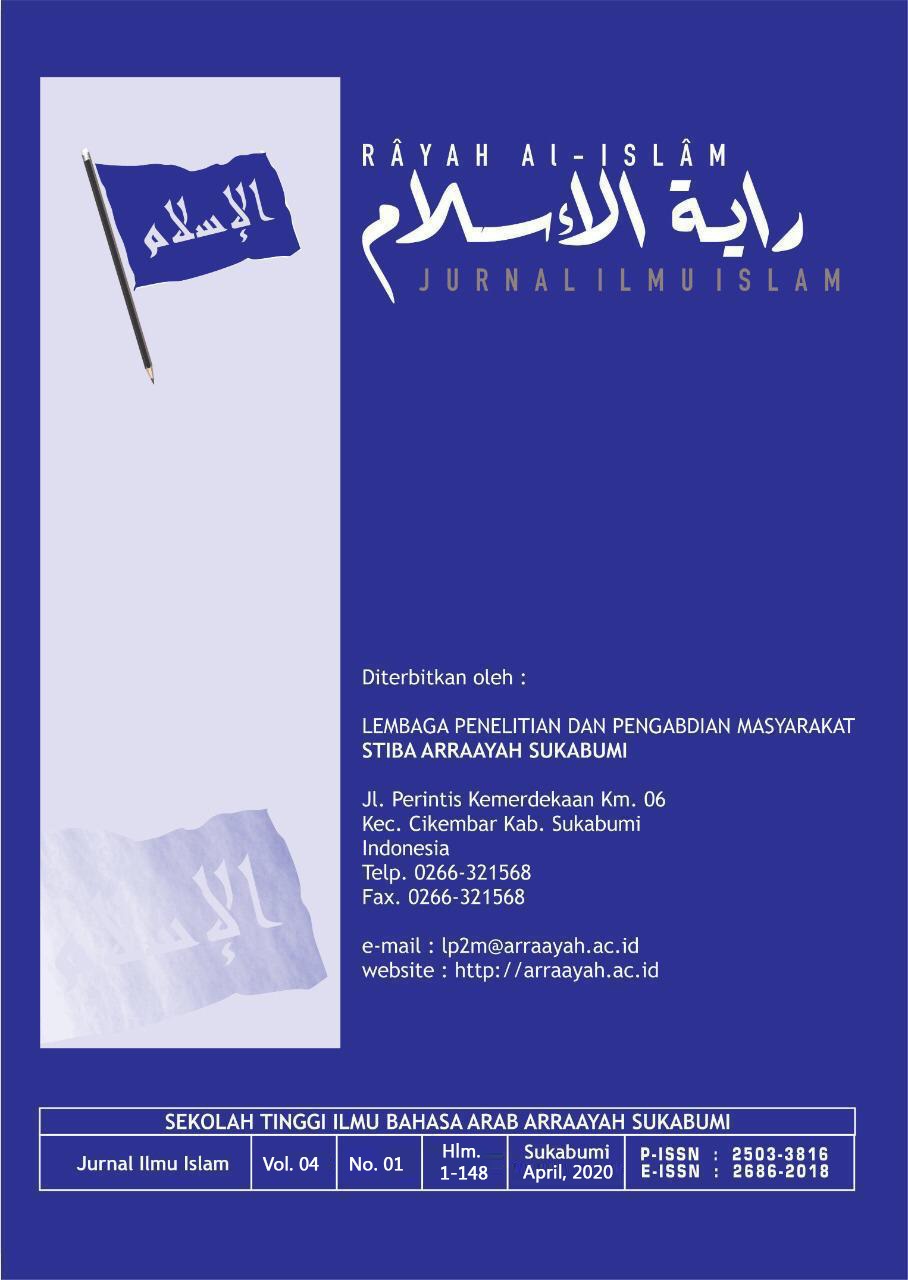Main Article Content
Abstract
This study aimed at knowing the Arabic and Indonesian temptations and revealing similarities and differences between them in terms of definition, conditions, characteristics, and divisions, and its predicts are to predict expected problems through the study of the Arabic prostrate, then draw to the results of the corresponding study to prepare appropriate study materials in the education of the prostrate for Indonesian students at the university level. This study followed the descriptive and analytical approach to find out the characteristics that the Sajā contained in both languages. It also used the cross-analytical approach to compare their systems and extract their similarities and differences. This study reached three results, the first of which is the similarities and differences between the Arabic and Indonesian braves that were exposed. The second is problems that arise based on the differences between them. And the last, applications from the results of the opposite study, such as making use of them to form some types of prose and display them when explaining, and drawing them into to design a study unit to teach al-Sajā for the university stage.
Keywords
Article Details
Authors who publish with this journal agree to the following terms:
- Authors retain copyright and grant the journal right of first publication with the work simultaneously licensed under a Creative Commons Attribution-ShareAlike 4.0 International License that allows others to share the work with an acknowledgment of the work's authorship and initial publication in this journal.
- Authors are able to enter into separate, additional contractual arrangements for the non-exclusive distribution of the journal's published version of the work (e.g., post it to an institutional repository or publish it in a book), with an acknowledgment of its initial publication in this journal.
- Authors are permitted and encouraged to post their work online (e.g., in institutional repositories or on their website) prior to and during the submission process, as it can lead to productive exchanges, as well as earlier and greater citation of published work (See The Effect of Open Access).
References
- Ĥanifah, Rahmi. 2018, Al-Dirasah Al-Taqabuliyyah Baina Al-Lughah Al-‘Arabiyyah Wa Indunisiyyah ‘Ala Mustawa Al-Jumlah Al-Fi’liyyah Wa Al-Istifadah Minha Li Al-Ta’lim Al-Lughah Al-‘Arabiyyah Li Al-Mubtadiin, Skripsi Stiba Ar-Raayah Sukabumi.
- Hasan Lubis, Hamid. 1994.Glosarium Bahasa dan Sastr,Badung, Angkasa.
- Ĥijab, Muhammad Nabiih. 1986. Balaghāh Al-Kitab Fii Al-‘Asr Al-‘Abasii, Makkah Al-Mukarrāmah, Maktabah Al-Thālib Al-Jami’i.
- Ibrahim, Abdul aziz Al-‘Ushāili. 2006.Ilmu Al-Lhughāh An-Nafsi, Al-Mamlakah Al-‘Arābiyah Al-Su’udiyah, Jami’ah Al-Imam Ibn Al-Sa’uud Al- Islamiyyah.
- ‘Iid, Ala’. 2018.” Anwa’ Al-Saja’,Nuzila Fii 27 Sibtambir 2019, https://mawdoo3.com.
- Indrawan, Teguh. 2003.Peribahasa Puisi Pantun Sajak, Jakarta, Infra Group.
- Jam’u Al-Lughāh Al-‘Arābiyyah. 2001.Al-Mu’jam Al-Washith, Msr, Maktabah Al-Syuruq Al-Dauliyyah.
- Masruchin,Ulin Nuha. 2007.Majas,Pantun dan Puisi, Yogyakarta, Huta Publiser .
- Muhammad Thābaq, ‘Abdul Jawaad. 1993.Dirāsah Balaghiyyah Fii Al-Saja’ Wa Al-Fashilah Al-Quraniyyah, Msr, Daar Al-Arqām.
- Qāsiim, Muhammad Ahmad. 2003.’Ulum Al-Balaghāh (Al-Badi’ Wa Al-Bayan Wa Al-Ma’ani ), Al-Muassasah Al-ĥadiitsah Li Al-Kitaab.
- ‘Utsaimin Al-, Muhammad Ibn Shālih. 1434H. Syarh Al-Balaghāh Min Kitaab Qawa’di Al- Lughah Al-‘Arabiyyah,Riyadh, Muassasah Al-Syaikh Muhammad Ibn Shalih Al-Utsaimin Al-Khairiyyah.
- Wezi Wezi, Kuttab. 2019. “ Ma’lumat ’An Al-Saja”, Nuzila Fii 27 Siptambir 2019,https://weziwezi.com.
